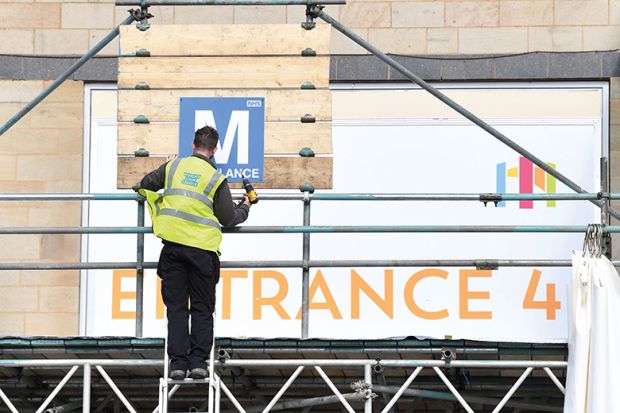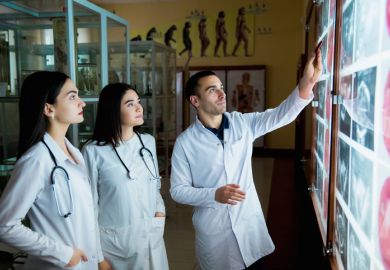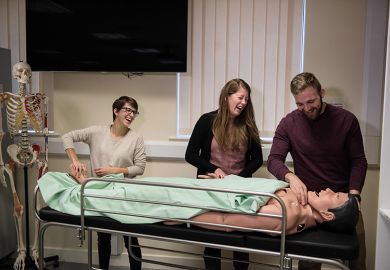UK medical schools, once the preserve of the self-proclaimed elite in the Russell Group, are increasingly being opened by modern universities. With newer universities often located in more deprived towns, cities and regions, this expansion has implications for access to medical training, the NHS and “levelling up” in the regions – and some argue that it must go further still.
The recent announcement of a medical school in Carlisle, run by the University of Cumbria in partnership with Imperial College London, is the latest of a new generation of institutions.
In 2018, a UK government plan to expand the number of medical school places by 1,500, or 25 per cent, aiming to reach regions where it was hard to recruit doctors, led to the creation of publicly funded medical schools at the universities of Central Lancashire, Lincoln and Sunderland, at Anglia Ruskin, Aston and Edge Hill universities, and in a partnership between Canterbury Christ Church University and the University of Kent. Many of these are set to graduate their first students soon.
This expansion may be widening access to medicine, traditionally a socially elite profession.
Of Sunderland’s medical students, 48 per cent are from the north-east of England and north Cumbria and 30 per cent are from widening participation backgrounds, while only 33 per cent are from private schools, which the university understands to be “the lowest of any medical school in the country”, said Sunderland vice-chancellor Sir David Bell.
It was “important to note there’s been no compromise on admissions standards in relation to existing medical schools”, he added.
Nevertheless, Sunderland has heard “powerful testimony” from its students saying that they would not have studied medicine without “the ability to do that more locally or regionally”, or at “a different kind of institution”, he continued.
Sanjiv Ahluwalia, head of the Anglia Ruskin School of Medicine in Chelmsford, which will graduate its first students in summer 2023, said its opening reflected recognition that Essex’s local NHS has a “workforce crisis” and that “the makeup of the medical workforce needs to better reflect the needs of its population”.
If local residents are able to study medicine locally, they tend to stay to work locally and “by staying they tend to reflect the needs and the wants and the desires of their own population – so it has a direct impact on quality of care”, he added.
The university’s applications process includes systems for increasing the number of applicants who come from “either a local or deprived background” – increasing the likelihood of getting an interview for those from the east of England, and discounting the normal AAA offer at A level as far as ABB for those who have “suffered hardship during their secondary education”, said Dr Ahluwalia.
On the quality of new schools, might it be the case that “more means less”? The standards set by the General Medical Council – which decides which organisations can award medical degrees via a lengthy approval process and carries out ongoing quality assurance – are “highly exacting from the moment you put in your first expression of interest all the way through”, said Sir David.
Meanwhile, medical schools benefit local residents, boosting an area’s “health economy” by hosting research that attracts clinical academics and leads to better care, said Clare Owen, assistant director of the Medical Schools Council.
In Sunderland, Sir David highlighted the emphasis placed on the medical school by city leaders when they talk about regeneration.
The “halo effect” generated by a medical school is “great for the university, but perhaps even more importantly, I think it’s really powerful for the city”, he added.
A report from the Medical Schools Council, published in October 2021, highlighted shortfalls in the UK’s domestic supply of doctors, calling for a further expansion of 5,000 medical school places, making it “likely that up to 13 new medical schools” would be required.
Brunel University London, the University of Worcester and University of Chester have all opened medical schools without central government funding in recent years (the Department of Health decides whether to fund medical schools).
This “shows the enthusiasm, that universities are not necessarily waiting for funding to become available from the government”, said Ms Owen. “I think that should spur the government on to think: are there new providers and could there be an expansion?”
She highlighted the variety and diversity of UK medical training as one of its strengths – which modern universities argue they are boosting further.
Dr Ahluwalia noted that for ARU, which has campuses in Cambridge and Chelmsford, the nearest medical schools include UCL and the University of Cambridge, which he described as an “exceptionally supportive” and “complementary” partner.
“Those medical schools play on the international stage – they create doctors who are being trained to do world-class research and provide lots of high-end services,” he continued.
“Our mission is very different: ours is to produce a workforce for Essex.”
POSTSCRIPT:
Print headline: Medical schools beyond the ‘elite’: expansion aids deprived regions
Register to continue
Why register?
- Registration is free and only takes a moment
- Once registered, you can read 3 articles a month
- Sign up for our newsletter
Subscribe
Or subscribe for unlimited access to:
- Unlimited access to news, views, insights & reviews
- Digital editions
- Digital access to THE’s university and college rankings analysis
Already registered or a current subscriber?








